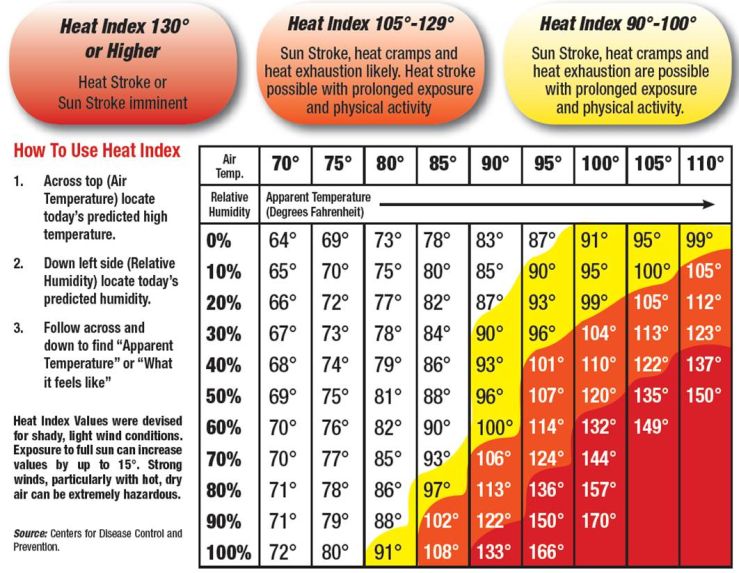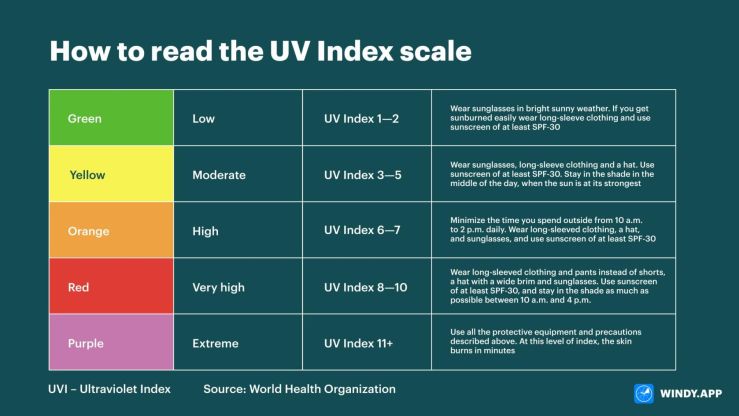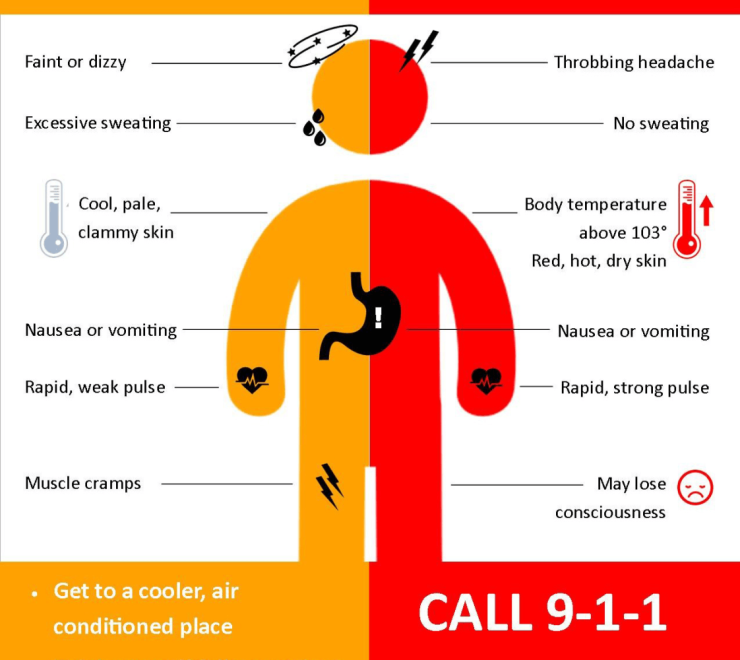Heat Safety
It’s that time of the year again, when it heats up in Tucson, Arizona. With summer right around the corner, we’ve already seen our temperatures pass 100 degrees, and it’s only going to get hotter. Due to our “dry heat,” coupled with the lack of shade and wind, the temperature is not always what it seems to be. Here is a review of the heat and UV index scales to help you be more aware of the dangers associated with our summer climate and provide guidance on staying hydrated and protected from the heat and sun.
Heat and UV Indexes
- The heat index, often called the “feels like” temperature, measures how hot it feels when air temperature combines with relative humidity. In Tucson’s arid climate, low humidity might make you think the heat is less intense, but don’t be fooled. The Centers for Disease Control and Prevention (CDC) warns that even in low-humidity climates, such as ours, the heat index can spike by up to 15°F. For example, a 100°F day with 20% humidity could feel like a scorching 114°F, far exceeding the 87–90°F suggested by standard heat index charts. This hidden risk makes it critical to stay vigilant.
- The UV index provides a score from 1 to 11+ that can be used to determine the intensity of UV radiation from the sun. The UV index scale below provides guidance, based on the current UV scale scores. Tucson’s lack of natural shade contributes to high UV indexes during the summer.
- To stay informed, check your smartphone's weather app for the heat and UV indexes, or go to the Weather Channel webpage and enter your city to see both.


Heat Illness and UV Overexposure
- Heat illness occurs when the body’s temperature rises too high and is unable to cool itself down. This can lead to heat cramps, heat exhaustion, and life-threatening heat stroke. Long-term consequences include organ damage, neurological issues, reduced tolerance to heat, and an increased risk of heart and kidney disease.
- UV overexposure can result in sunburns as severe as first through third-degree burns, with symptoms ranging from pain, redness, blistering, severe swelling, infections, and shock. Long-term effects include premature aging of the skin, skin cancer, decreased skin immunity, and eye damage.

- The first sign of dehydration is thirst.
- Hydrate before you need it, think 24 hours ahead.
- Drink plenty of water throughout the day.
- Aim for half an ounce of water per pound of body weight, adjusting for activity and environmental factors.
- Ensure you have adequate water for your day by using a large water jug or hydration pack.
- Replenish electrolytes – Gatorade, liquid-IV, bananas, and pickles are good options.
- Limit caffeine, alcohol, and sugary drinks as they can contribute to dehydration.
- Recognize signs of dehydration – thirst, dark or no urine, dizziness, confusion, and fatigue.
- If you are experiencing these symptoms, drink water and rest in a cool, shaded area.
- If symptoms persist or worsen, seek medical assistance.
Staying Protected
- Avoid direct sunlight whenever possible, and seek shade when available.
- Wear sunscreen – use waterproof, broad-spectrum SPF 30+ and reapply every 2 hours. Don’t forget your hands and lips.
- Cover up – lightweight long-sleeved shirts, a hat, and UV-blocking sunglasses.
- Don’t let the clouds fool you – up to 80% of the sun’s UV rays can penetrate the clouds and burn your skin.